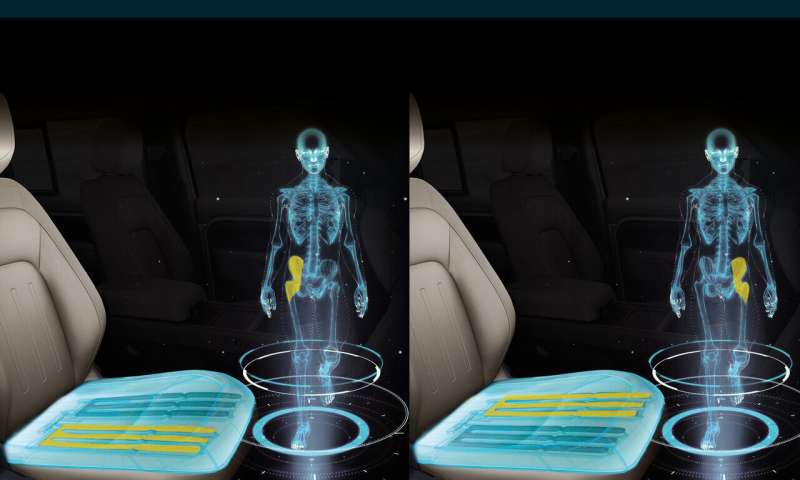January 18, 2020 weblog
Could your car seat trick brain with walk feels?

What's this? The long-time complaint you have of having to sit in cars during long hours in grueling commutes can be dropped, at least in part. Jaguar Land Rover believes that they will give you a way to trick your body into thinking it is walking.
Fundamentally, you are "tricking the brain with some fake pelvic oscillation," said Roadshow on Friday, and that could keep your muscles stimulated, such that you think you are walking.
Reports said the solution could be tailored to each passenger for comfort while the seat made its adjustments over a long journey.
Editor of TopGear.com Vijay Pattni, said the shapeshifting seat simulates walking "rhythm" to mitigate the perils of sitting down for a really long time and driving. The feature is being trialed by the company's Interiors Research Division.
So what have we gathered so far...A UK-based press release suggests this is a seat of the future in cars, and those seats make you feel as if you are walking.
A solution in search of a problem?
Well, motoring.com.au headlined "Next-gen Jaguar Land Rover seats to give you a workout" and under that, "Forget massaging seats... Jaguar Land Rover says these new chairs will make you fitter."
But why? The company's answer: It is a design to improve customer wellbeing. Sitting down for too long poses health risks and the company turned to the Jaguar Land Rover's Body Interiors Research division for ideas.
Health risks from sitting down too long were recognized.
"More than a quarter of people worldwide – 1.4 billion – are living increasingly sedentary lifestyles, which can shorten muscles in the legs, hips and gluteals causing back pain. The weakened muscles also mean you are more likely to injure yourself from falls or strains. By simulating the rhythm of walking, a movement known as pelvic oscillation, the technology can help mitigate against the health risks of sitting down for too long on extended journeys..."
The pelvic oscillation idea involves a series of actuators in the seat foam to create constant micro-adjustments that make your brain think you're walking, and Roadshow's Sean Szymkowski referred to the seat as having "a never-ending loop of microadjustments" from the foam's actuators.
For a bigger picture view, customers are being courted not only on the merits of looks, safety and smooth rides but also with helpful wellness guides. The company has a chief medical officer, Dr. Steve Iley.
Last year, Dr Iley issued advice on how to adjust your seat to enhance driving position, from removing bulky items in your pocket to supporting your thighs to reduce pressure points.
The March 2019 video showed how to adjust the seat and posture for driving position. It may be well worth a look because, as the video notes advised, "new vehicle technology is part of the solution. But only if it is used properly."
(Example: Empty your pockets. Bulky items eat into a sitting position. Push your bottom as close to the back on the seat as you can. Shoulders should be in contact with the seat even when you are turning the steering wheel. Adjust the headrest so that it is the same height as the top of your head.)
Also, Jaguar Land Rover vehicles of the future could help reduce the effects of motion sickness for drivers and their passengers. The company had this to say about their research into motion sickness and what they could do to address it.
Through research, an algorithm has been generated to create a 'wellness score' for each passenger, which calculates how prone they are to feeling car sick.
More information: media.jaguarlandrover.com/news … -think-youre-walking
© 2020 Science X Network

















